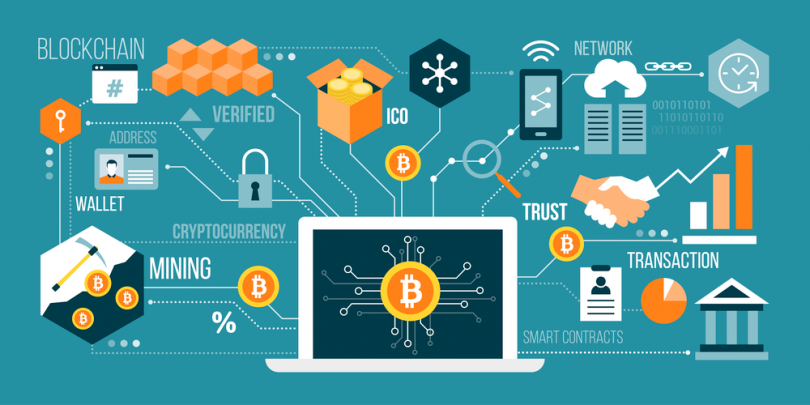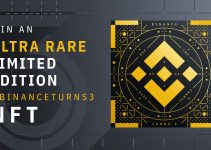
What is Blockchain?
Blockchain, sometimes referred to as Distributed Ledger Technology (DLT), makes the history of any digital asset unalterable and transparent through the use of decentralization and cryptographic hashing.
A simple analogy for understanding blockchain technology is a Google Doc. When we create a document and share it with a group of people, the document is distributed instead of copied or transferred. This creates a decentralized distribution chain that gives everyone access to the document at the same time. No one is locked out awaiting changes from another party, while all modifications to the doc are being recorded in real-time, making changes completely transparent.
Of course, blockchain is more complicated than a Google Doc, but the analogy is apt because it illustrates three critical ideas of the technology:
The idea of the birth of Blockchain technology
Limitations in ancient transactions
In the past, when trading currencies, borrowing money, repaying debts, people would agree (between A and B) and record that transaction information in a book to store it – called a ledger. . Then give this book to a reputable intermediary C to hold. And of course this person C must be trusted by both A and B.
Here we will see the participating components as follows:
- A & B are 2 people involved in a transaction with each other.
- C is a reputable person who acts as an intermediary.
- Ledger (paper). (first)
In this case, we will face some limitations:
- The number pad is usually made of paper and it is susceptible to termites and breaks down over time. That is, the information stored on it does not last forever. Example: A borrows money from B for 12 years. But 10 years later the notebook has rotted and the information on it can no longer be viewed. At that time, A denied that he did not borrow money from B, and B also did not have a notebook to bring as proof that A borrowed his money.
- Information can be changed or destroyed: someone can steal a notebook and they can delete a line of information, or tear off a page, then the information is no longer as complete as it was in the beginning. again. That is, information can be changed.
- Existence of a third intermediary: That book is held by a reputable third intermediary. And not everyone can easily find a third person to confirm. And at the same time, the other two traders must completely trust this middleman. (2)
Limitations in transactions through the banking system
Until society develops, we have a banking system to replace the above-mentioned third intermediary C. And the paper ledger was replaced by the bank’s computer system. (3)
Advantages of the banking system:
- Usually the government, the state stands out to ensure the interests of traders.
- Information stored in a computer system is stable over time, not afraid of being “rotted” over time.
However, transactions through the banking system still have some problems such as:
- Risk of data being threatened: Because the bank server contains a lot of important information, it is always the target of many bad guys. Data can still be stolen or altered. (4)
- Transaction fee: The fee when users make transfers to each other is also an issue for transactions.
- There still exists an intermediary third party, which is the bank: The user’s transaction information is held by the bank. And they can exploit, or sell this information to 3rd parties. In addition, centralized management systems, banks or the state can request to freeze users’ accounts. And this is the case that no user wants.
⇒ Understanding those risks and limitations, Blockchain was born to solve the above problems.
BLOCKCHAIN EXPLAINED: A QUICK OVERVIEW
- A blockchain is a database that stores encrypted blocks of data then chains them together to form a chronological single-source-of-truth for the data
- Digital assets are distributed instead of copied or transferred, creating an immutable record of an asset
- The asset is decentralized, allowing full real-time access and transparency to the public
- A transparent ledger of changes preserves integrity of the document, which creates trust in the asset.
- Blockchain’s inherent security measures and public ledger make it a prime technology for almost every single sector
Blockchain is an especially promising and revolutionary technology because it helps reduce risk, stamps out fraud and brings transparency in a scalable way for myriad uses.
https://youtube.com/watch?v=SSo_EIwHSd4%3Fautoplay%3D0%26start%3D0%26rel%3D0
How Does Blockchain Work?
The whole point of using a blockchain is to let people — in particular, people who don’t trust one another — share valuable data in a secure, tamperproof way.
— MIT Technology Review
Blockchain consists of three important concepts: blocks, nodes and miners.
Blocks
Every chain consists of multiple blocks and each block has three basic elements:
- The data in the block.
- A 32-bit whole number called a nonce. The nonce is randomly generated when a block is created, which then generates a block header hash.
- The hash is a 256-bit number wedded to the nonce. It must start with a huge number of zeroes (i.e., be extremely small).
When the first block of a chain is created, a nonce generates the cryptographic hash. The data in the block is considered signed and forever tied to the nonce and hash unless it is mined.
Miners
Miners create new blocks on the chain through a process called mining.
In a blockchain every block has its own unique nonce and hash, but also references the hash of the previous block in the chain, so mining a block isn’t easy, especially on large chains.
Miners use special software to solve the incredibly complex math problem of finding a nonce that generates an accepted hash. Because the nonce is only 32 bits and the hash is 256, there are roughly four billion possible nonce-hash combinations that must be mined before the right one is found. When that happens miners are said to have found the “golden nonce” and their block is added to the chain.
Making a change to any block earlier in the chain requires re-mining not just the block with the change, but all of the blocks that come after. This is why it’s extremely difficult to manipulate blockchain technology. Think of it as “safety in math” since finding golden nonces requires an enormous amount of time and computing power.
When a block is successfully mined, the change is accepted by all of the nodes on the network and the miner is rewarded financially.
BEST BLOCKCHAIN COMPANIES WITH OPEN JOBSTop Blockchain Companies Hiring Now
Nodes
One of the most important concepts in blockchain technology is decentralization. No one computer or organization can own the chain. Instead, it is a distributed ledger via the nodes connected to the chain. Nodes can be any kind of electronic device that maintains copies of the blockchain and keeps the network functioning.
Every node has its own copy of the blockchain and the network must algorithmically approve any newly mined block for the chain to be updated, trusted and verified. Since blockchains are transparent, every action in the ledger can be easily checked and viewed. Each participant is given a unique alphanumeric identification number that shows their transactions.
Combining public information with a system of checks-and-balances helps the blockchain maintain integrity and creates trust among users. Essentially, blockchains can be thought of as the scalability of trust via technology. USES

Cryptocurrencies: The Beginning of Blockchain’s Technological Rise
Blockchain’s most well-known use (and maybe most controversial) is in cryptocurrencies. Cryptocurrencies are digital currencies (or tokens), like Bitcoin, Ethereum or Litecoin, that can be used to buy goods and services. Just like a digital form of cash, crypto can be used to buy everything from your lunch to your next home. Unlike cash, crypto uses blockchain to act as both a public ledger and an enhanced cryptographic security system, so online transactions are always recorded and secured.
HOW DOES CRYPTOCURRENCY WORK?
Cryptocurrencies are digital currencies that use blockchain technology to record and secure every transaction. A cryptocurrency (for example, Bitcoin) can be used as a digital form of cash to pay for everything from everyday items to larger purchases like cars and homes. It can be bought using one of several digital wallets or trading platforms, then digitally transferred upon purchase of an item, with the blockchain recording the transaction and the new owner. The appeal of cryptocurrencies is that everything is recorded in a public ledger and secured using cryptography, making an irrefutable, timestamped and secure record of every payment.
To date, there are roughly 6,700 cryptocurrencies in the world that have a total market cap around $1.6 trillion, with Bitcoin holding a majority of the value. These tokens have become incredibly popular over the last few years, with one Bitcoin equaling $60,000. Here are some of the main reasons why everyone is suddenly taking notice of cryptocurrencies:
- Blockchain’s security makes theft much harder since each cryptocurrency has its own irrefutable identifiable number that is attached to one owner.
- Crypto reduces the need for individualized currencies and central banks- With blockchain, crypto can be sent to anywhere and anyone in the world without the need for currency exchanging or without interference from central banks.
- Cryptocurrencies can make some people rich- Speculators have been driving up the price of crypto, especially Bitcoin, helping some early adopters to become billionaires. Whether this is actually a positive has yet to be seen, as some retractors believe that speculators do not have the long-term benefits of crypto in mind.
- More and more large corporations are coming around to the idea of a blockchain-based digital currency for payments. In February 2021, Tesla famously announced that it would invest $1.5 billion into Bitcoin and accept it as payment for their cars.
Of course, there are many legitimate arguments against blockchain-based digital currencies. First, crypto isn’t a very regulated market. Many governments were quick to jump into crypto, but few have a staunch set of codified laws regarding it. Additionally, crypto is incredibly volatile due to those aforementioned speculators. In 2016, Bitcoin was priced around $450 per token. It then jumped to about $16,000 a token in 2018, dipped to around $3,100, then has since increased to more than $60,000. Lack of stability has caused some people to get very rich, while a majority have still lost thousands.
Whether or not digital currencies are the future remains to be seen. For now, it seems as if blockchain’s meteoric rise is more starting to take root in reality than pure hype. Though it’s still making headway in this entirely-new, highly-exploratory field, blockchain is also showing promise beyond Bitcoin.

Beyond Bitcoin: Ethereum Blockchain
Originally created as the ultra-transparent ledger system for Bitcoin to operate on, blockchain has long been associated with cryptocurrency, but the technology’s transparency and security has seen growing adoption in a number of areas, much of which can be traced back to the development of the Ethereum blockchain.
In late 2013, Russian-Canadian developer Vitalik Buterin published a white paper that proposed a platform combining traditional blockchain functionality with one key difference: the execution of computer code. Thus, the Ethereum Project was born.
Ethereum blockchain lets developers create sophisticated programs that can communicate with one another on the blockchain.
Tokens
Ethereum programmers can create tokens to represent any kind of digital asset, track its ownership and execute its functionality according to a set of programming instructions.
Tokens can be music files, contracts, concert tickets or even a patient’s medical records. Most recently, Non-Fungible Tokens (NFTs) have become all the rage. NFTs are unique blockchain-based tokens that store digital media (like a video, music or art). Each NFT has the ability to verify authenticity, past history and sole ownership of the piece of digital media. NFTs have become wildly popular because they offer a new wave of digital creators the ability to buy and sell their creations, while getting proper credit and a fair share of profits.
Newfound uses for blockchain have broadened the potential of the ledger technology to permeate other sectors like media, government and identity security. Thousands of companies are currently researching and developing products and ecosystems that run entirely on the burgeoning technology.
Blockchain is challenging the current status quo of innovation by letting companies experiment with groundbreaking technology like peer-to-peer energy distribution or decentralized forms for news media. Much like the definition of blockchain, the uses for the ledger system will only evolve as technology evolves.
BLOCKCHAIN APPLICATIONS
Blockchain has a nearly endless amount of applications across almost every industry. The ledger technology can be applied to track fraud in finance, securely share patient medical records between healthcare professionals and even acts as a better way to track intellectual property in business and music rights for artists.HISTORY

History of Blockchain
Although blockchain is a new technology, it already boasts a rich and interesting history. The following is a brief timeline of some of the most important and notable events in the development of blockchain.
2008
- Satoshi Nakamoto, a pseudonym for a person or group, publishes “Bitcoin: A Peer to Peer Electronic Cash System.”
2009
- The first successful Bitcoin (BTC) transaction occurs between computer scientist Hal Finney and the mysterious Satoshi Nakamoto.
2010
- Florida-based programmer Laszlo Hanycez completes the first ever purchase using Bitcoin — two Papa John’s pizzas. Hanycez transferred 10,000 BTC’s, worth about $60 at the time. Today it’s worth $80 million.
- The market cap of Bitcoin officially exceeds $1 million.
2011
- 1 BTC = $1USD, giving the cryptocurrency parity with the US dollar.
- Electronic Frontier Foundation, Wikileaks and other organizations start accepting Bitcoin as donations.
2012
- Blockchain and cryptocurrency are mentioned in popular television shows like The Good Wife, injecting blockchain into pop culture.
- Bitcoin Magazine launched by early Bitcoin developer Vitalik Buterin.
2013
- BTC market cap surpassed $1 billion.
- Bitcoin reached $100/BTC for the first time.
- Buterin publishes “Ethereum Project” paper suggesting that blockchain has other possibilities besides Bitcoin (e.g., smart contracts).
2014
- Gaming company Zynga, The D Las Vegas Hotel and Overstock.com all start accepting Bitcoin as payment.
- Buterin’s Ethereum Project is crowdfunded via an Initial Coin Offering (ICO) raising over $18 million in BTC and opening up new avenues for blockchain.
- R3, a group of over 200 blockchain firms, is formed to discover new ways blockchain can be implemented in technology.
- PayPal announces Bitcoin integration.
2015
- Number of merchants accepting BTC exceeds 100,000.
- NASDAQ and San-Francisco blockchain company Chain team up to test the technology for trading shares in private companies.
2016
- Tech giant IBM announces a blockchain strategy for cloud-based business solutions.
- The government of Japan recognizes the legitimacy of blockchain and cryptocurrencies.
2017
- Bitcoin reaches $1,000/BTC for the first time.
- Cryptocurrency market cap reaches $150 billion.
- JP Morgan CEO Jamie Dimon says he believes in blockchain as a future technology, giving the ledger system a vote-of-confidence from Wall Street.
- Bitcoin reaches its all-time high at $19,783.21/BTC.
- Dubai announces its government will be blockchain-powered by 2020.
2018
- Facebook commits to starting a blockchain group and also hints at the possibility of creating its own cryptocurrency.
- IBM develops a blockchain-based banking platform with large banks like Citi and Barclays signing on.
2019
- China’s President Ji Xinping publicly embraces blockchain as China’s central bank announces it is working on its own cryptocurrency
- Twitter & Square CEO Jack Dorsey announces that Square will be hiring blockchain engineers to work on the company’s future crypto plans
- The New York Stock Exchange (NYSE) announces the creation of Bakkt – a digital wallet company that includes crypto trading
2020
- Bitcoin almost reaches $30,000 by the end of 2020
- PayPal announces it will allow users to buy, sell and hold cryptocurrencies
- The Bahamas becomes the world’s first country to launch its central bank digital currency, fittingly known as the “Sand Dollar”
- Blockchain becomes a key player in the fight against COVID-19, mainly for securely storing medical research data and patient information


